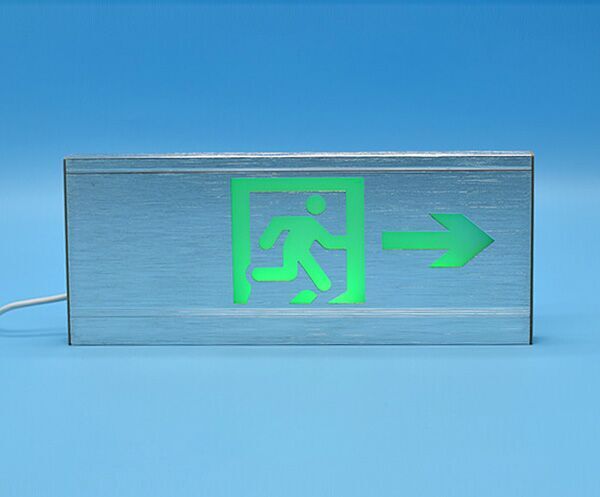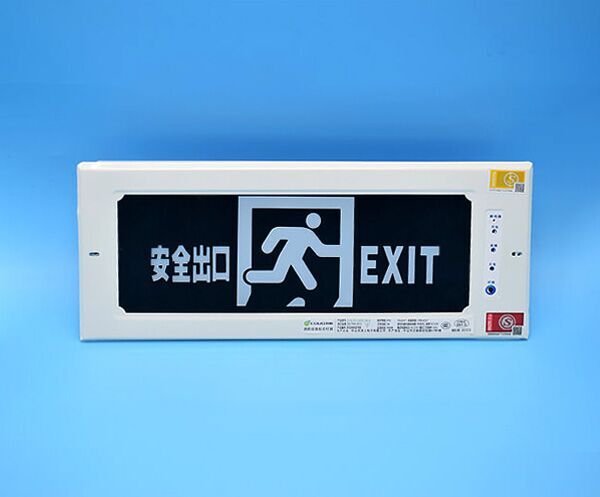When an emergency or power outage affects your business, it is essential to have reliable emergency lights and clearly marked exits. Emergency lighting and exit signs are among the most important safety devices in commercial buildings. They are designed to help protect employees and customers by lighting the way toward a safe exit in the event of a fire or other emergency.
While it's easy to see the importance of emergency lighting systems, it's just as important to understand the installation, testing, and maintenance requirements set forth by national and local authorities to ensure all emergency and exit lights are continually in working order.
Emergency lighting systems help occupants navigate and safely exit the building in a fire or security-related emergency. Emergency lights, exit signs, and panic doors are safety devices that are just as important as fire alarm systems. While the latter communicates a crisis, emergency pathway lights and exits work together to ensure building occupants evacuate safely.
Beyond helping occupants exit safely, emergency exit lighting is required by law for all non-domestic buildings. Let’s briefly review the regulatory requirements for emergency lighting to help you avoid fire protection code violations.
According to NFPA Life Safety Code 101, all commercial buildings must have emergency and exit path lighting. NFPA 101 is updated every three years to ensure new and existing facilities offer the best protection from fire and other related hazards for occupants. Since not all jurisdictions accept all the requirements established in each updated code, you should check the rules and regulations set by your local authority having jurisdiction (AHJ) to ensure regulatory compliance.

When planning your emergency lighting installation, you’ll want to be aware that:
● Commercial, industrial, institutional, educational, religious, medical, and many other building types generally require emergency lighting.
● All exit routes in a building—including hallways, stairwells, and corridors—must be illuminated with emergency backup lights so anyone with normal vision can see the path to the exit.
● Internal rooms, bathrooms, and storage areas larger than a broom closet have no windows and therefore require emergency lighting.
● Emergency light fixtures must be spaced correctly to prevent excessively bright and dark spots.
● Sometimes, allowances can be made for areas with large windows that supply a high level of natural light.
Remember, lights must be aimed appropriately to illuminate the walkway. Bulbs that point toward the ceiling or wall don’t meet code requirements, even if they’re installed in the proper locations.
When installing exit signs in your building, you’ll want to keep the following in mind:
● Each door exiting into a hallway that leads to the primary building exit must be clearly noticeable and marked with a sign that reads “Exit.”
● Exit signs must be illuminated at all times and include a backup battery for continued illumination in case of a power outage. The sign must consist of plain, legible letters and be a distinctive color that stands out from the background.
● All exit route doors must lack furnishings, decorations, or equipment that obscure the exit or the exit sign.
● The line-of-sight to an exit sign must be unobstructed at all times. If a hallway turns, additional exit signs with directional indicators must be installed to show the way to the nearest exit.
● If the direction of travel is not obvious, signs must be installed along the exit path showing the direction of the nearest exit.
● Doors that could easily be mistaken for an exit along the exit route must be marked “Not an Exit,” “No Exit,” or have a sign indicating the room’s use (closet, storage, etc.).
It’s also important to know that you’ll want to schedule annual emergency lighting inspections to ensure your lights remain up to code and are repaired or replaced as necessary.

Since people rely on emergency and exit lights to safely guide them out of dangerous situations, it is essential to ensure the system is functioning correctly by testing it periodically. In fact, without following necessary testing guidelines, you are risking building occupants' safety and violating life safety codes intended to prevent emergency lighting failure. The NFPA 101 permits three options for conducting emergency light testing, including:
1. Manually test and keep written records
2. Automatically test with self-testing/self-diagnostic battery-operated lighting equipment
3. Automatically test with a computer-based self-testing lighting system
Regardless of the option used for testing your emergency lighting system, it must include a 30-second test every month and a 90-minute test every year. An experienced fire protection company must follow the monthly and yearly maintenance schedule below to ensure emergency and exit lights will work when needed.

 Ni-MH Battery C4700mAh 3.6V
Ni-MH Battery C4700mAh 3.6V Nickel Cadmium Nicd Battery Pack SC1800mAh 3.6V
Nickel Cadmium Nicd Battery Pack SC1800mAh 3.6V Ni-Cd Battery Pack D4000mAh 3.6V
Ni-Cd Battery Pack D4000mAh 3.6V Ni-Cd Battery Pack C2500mAh 3.6V
Ni-Cd Battery Pack C2500mAh 3.6V NICAD Battery Pack AA900mAh 3.6V
NICAD Battery Pack AA900mAh 3.6V LiFePO4 IFR18650 1600mAh 3.2V
LiFePO4 IFR18650 1600mAh 3.2V LiFePO4 IFR18650 1600mAh 6.4V
LiFePO4 IFR18650 1600mAh 6.4V Ni-MH Battery C4000mAh 3.6V
Ni-MH Battery C4000mAh 3.6V E-bike Battery 48V 10Ah JL-1
E-bike Battery 48V 10Ah JL-1 E-bike battery 48V 10Ah Qing Tian
E-bike battery 48V 10Ah Qing Tian